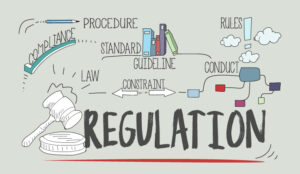Elisabeth De Longeaux at Odigo explains how outbound calls can be a great way for organisations to connect with existing and potential new customers.
However, some outdated practices have created a negative perception for customers. As a result, outbound call regulations have been developed both for the purpose of customer protection and to steer contact centre best practices.
What do organisations need to consider when using outbound calls, and how does geographical location affect that?
When planning an outbound campaign, organisations need to deliver it with care using the most appropriate automatic dialler in order to promote positive customer experiences.
There is a clear need to be aware of not only the regulations governing the outbound call centre’s location, but also those that apply wherever your customers may be.
Outbound Call Regulations Support Healthy Boundaries
Any relationship needs healthy boundaries, including those with customers. Whether offering services to existing customers or trying to engage with new ones, organisations need to be careful not to appear a nuisance or intrusive.
To help the UK employs an opt-out model as does the USA and France. This requires customers to take the initiative and register on a do not call list. Organisations must then comply by consulting both external and internal lists before launching any campaign.
When customers register their number with the Telephone Preference Service (TPS), to opt out of unsolicited sales or marketing calls, it becomes a legal requirement not to call that number after 28 days. This means the TPS register should be checked every 4 weeks as a bare minimum.
Other countries have much stricter regulations to protect their consumers. In Germany for example, consumers must opt-in to receive outbound calls. Making contact without their consent is illegal, and records of compliance need to be kept for five years. The Netherlands has similar rules.
Just because it’s possible to call someone doesn’t mean you should, however. Making contact too frequently or poorly personalised offers can reinforce the negative opinion of outbound calls and strengthen the conviction that an opt-out model is insufficient to protect consumers.
The nuisance factor certainly angered French consumer associations who were strongly opposed to a 2021 draft government decree which would allow organisations to call the same person 4 times a month. This kind of reaction can leave organisations in somewhat of a dilemma.
With so much competition in the digital world, how can contact centres reach out and offer added value, before a customer seeks it elsewhere, while also ensuring this is perceived as a positive experience with their brand?
Regulations for Outbound Call Centre Etiquette
Bad manners or a lack of transparency is a poor start to any call, and will only lead to low-quality experiences and mistrust.
This has led to the creation of regulations which encourage proper outbound call etiquette. For many companies, however, adherence is easy as it’s mostly common sense and good manners. There are four main guidelines to follow.
First off, when to call. Regardless of location, the guidelines here are broadly similar. In the UK although there are no enforced regulations the industry standard is 8am-9pm during the week and 9am-5pm on Saturdays.
Calling outside these hours is possible but may well result in complaints and be counterproductive. Sundays and public holidays aren’t recommended contact times in the UK but in many other countries calling on these days is actually prohibited.
Secondly, there is the need to make a proper introduction. Best practice is suggested by the , an introduction using real names is advisable followed by where you are calling from and the reason for your call.
As to the necessities, the Information Commissioner’s Office states that callers must identify themselves, allow the number (or an alternative contact number) to be displayed to the person receiving the call, and provide a contact address or freephone number if asked.
Additionally, an outbound call to a UK customer that can’t for some reason connect to an agent (abandoned call) should play an automated message to identify the company and provide the number for customers to register on the Do Not Call list.
Third, are the regulations regarding what type of number an outbound call should originate from, these vary more widely across geographical locations and can be more frequently updated.
Customers may also need the ability to return a call to such a number or be provided with an alternative. These are some of the more changeable rules so regular compliance checks are wise.
Lastly, there is record keeping. Maintaining accurate records in an outbound call contact centre is crucial to demonstrate compliance. These records need to adhere to data protection rules such as GDPR and be kept for 3-5 years.
With So Many Regulations, Why Use Outbound Calls?
The answer is simple: outbound calls generate positive customer experiences to differentiate a brand, increase value for customers and revenue for companies when they are well executed.
The key is to deliver a select number of informed and personalised proactive services, relevance and a measured approach to help avoid communications being perceived as a nuisance.
A Gartner study of 6,000 customers showed that this kind of proactive customer service resulted in increases in the Net Promoter Score (NPS), Customer Satisfaction Score (CSAT) and Customer Effort Score (CES).
There have also been several studies into the success of different types of calls from outbound call contact centres such as discovery calls, cold calling and proactive customer service.
Two such studies back in 2017 and 2018 by Gong show how the perceived quality of an experience can even be predictably influenced by the language used, not just how the campaign is delivered. Here are a few top tips:
Don’t use these words which can harm success rates:
- “Show you how” ↓ 13%
- “Discount” ↓17%
- “Contract” ↓7%
- “Free trial” ↓5%
- Mentioning the company’s name more than 4 times ↓14%
Do use:
- Collaborative words like we and us in balance with I and me.
- Friendly openings like “How have you been?”
- A proactive reason for calling as part of the introduction.
Organisations should also conduct outbound campaigns across multiple channels. By reaching out in an indirect way, customers can choose when to interact. The windows of opportunity to catch people at a convenient time are shrinking in modern society. Email and SMS, with customers who opted into these services, can offer personalised up-selling or cross-selling promotions as part of a channel-less strategy. This tactic also creates an opportunity for customers to request callbacks to discuss details at the most convenient time for them.
Voice Experience Helps Send a Professional Message
It’s important to remember outbound call regulations have developed for a reason and help promote positive added-value experiences.
Well-crafted campaigns can contribute to positive relationships with customers rather than being something that drives them away.
Contact Centre as a Service (CCaaS) solutions have 360-degree customer views to inform customers of personalised offers, plus a full spectrum of call management tools built with 35 years of experience and ready to meet the needs of large organisations.
Author: Guest Author
Published On: 4th Aug 2022
Read more about - Guest Blogs, Odigo





































